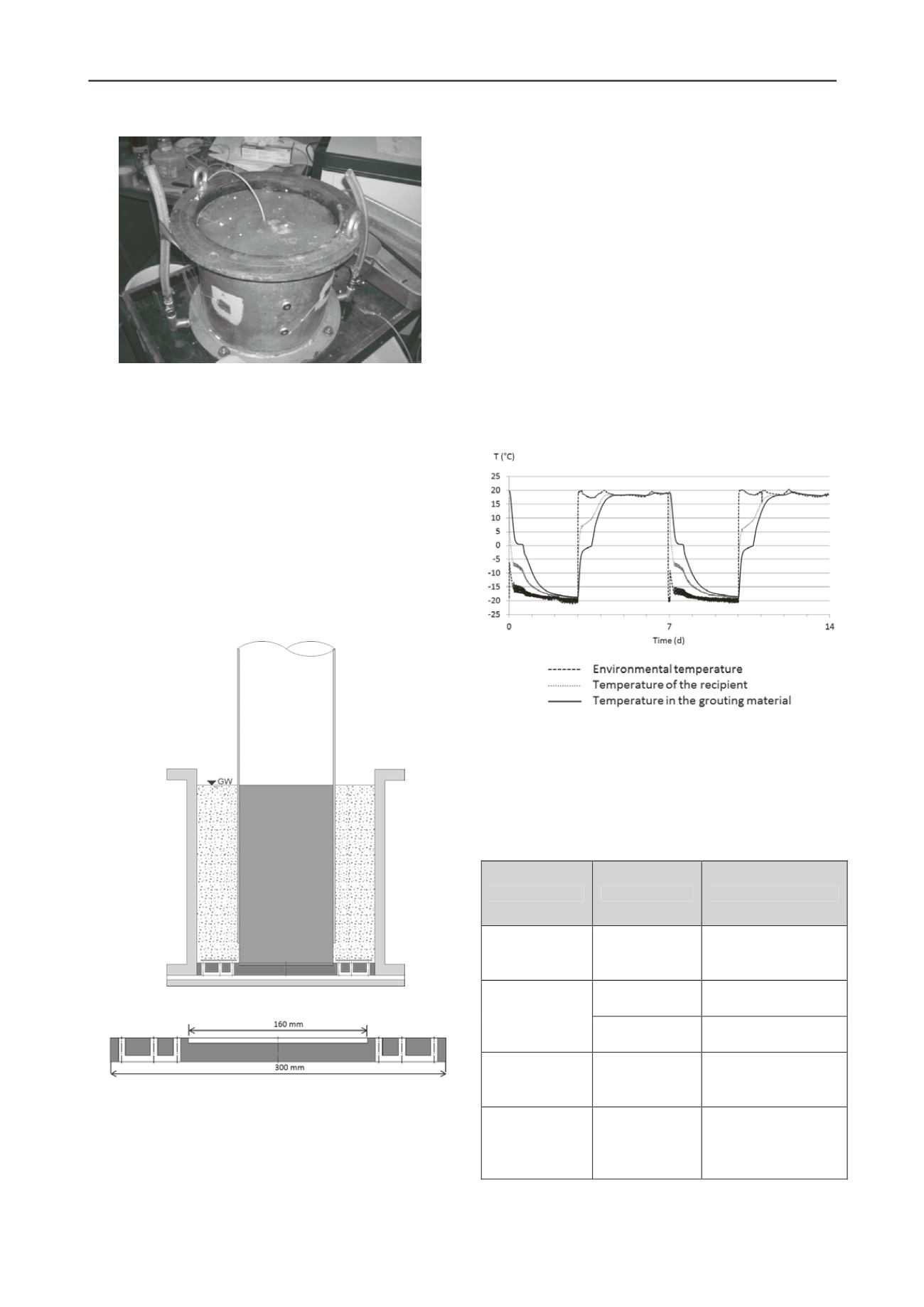
3365
Technical Committee 307 + 212 /
Comité technique 307 + 212
Figure 3: General view after assembly and hardening
As the development of the procedure requires many
preliminary tests, the first experiments were conducted with
sand for which time for consolidation and water saturation is
reduced in comparison with fine grained soils.
The sample represented on figure 4 is as following
assembled: firstly, filter plate (see figure 5) is laid in the
encasement and the bored part covered with a filter paper. A
PVC tube is then inserted in the cut-out of the filter plate,
reproducing the use of a tubing casing. Sand is filled around this
PVC tube and saturated from the bottom up. At last, grouting
material is injected and the PVC tube is vertically removed.
Grouting material hardens during 28 days before applying
temperature loads. The assembly procedure has been validated
and improved on base on experiments with reduced dimensions
as related in the previous part.
Figure 4: Sectional drawing of the sample during assembly
Figure 5: Sectional drawing of the filter plate
4.3
Temperature measurements
In case of a borehole heat exchanger, freeze-thaw cycles are
mostly due to temperature changes inside the pipes. However,
temperature varies during the tests outside the assembled unit in
order to keep homogenous samples for performing unconfined
compression tests. In the procedures referred in part 3 that deal
with other boundary conditions and materials, temperature
varies either between -10 °C and +10 °C or between -20 °C and
+20 °C. The temperature range selected here between -20 °C
and +20 °C is in accordance with the attainable temperatures
ins
6), the
eriod of one freeze thaw cycle is fixed to 7 days. Investigations
described in next part were carried out after two cycles.
ide the pipes of a borehole heat exchanger with an additional
security factor.
Temperature measures are necessary before execution of the
main experiments in order to fix the period of the freeze-thaw
cycles, considering that freezing and thawing processes should
attain a stable phase. A first sensor is used in order to control
the environment temperature, a second sensor measures the
temperature on the border of the encasement and a third sensor
has been brought during the assembly inside the grouting
material. According to those measurements (figure
p
Figure 6: Temperature measurements during freeze thaw cycles on a
aturated sand
of the tests and investigations which were
arried out in the framework of the procedure development is
Table 1: Ty
sample of grouting material and s
4.4
Further investigations
An overview
c
given in table 1.
pes of investigations
Sample
Conditions
Investigations
Grouting material
With freeze-thaw
Temperature measures,
f sand
and watersaturated
sand
cycles
grading curve o
Without freeze
thaw cycles
Grading curve
Blank sample with
watersaturated
sand
With freeze-thaw
cycles
Grading curve
Blank sample with With freeze-thaw
fter
grouting material
cycles
Surface alteration a
each cycle, unconfined
compression test
Blank sample wit
grouting
h
material
(in contact with
water)
With freeze-thaw
cycles
after
each cycle, unconfined
compression test
Surface alteration


